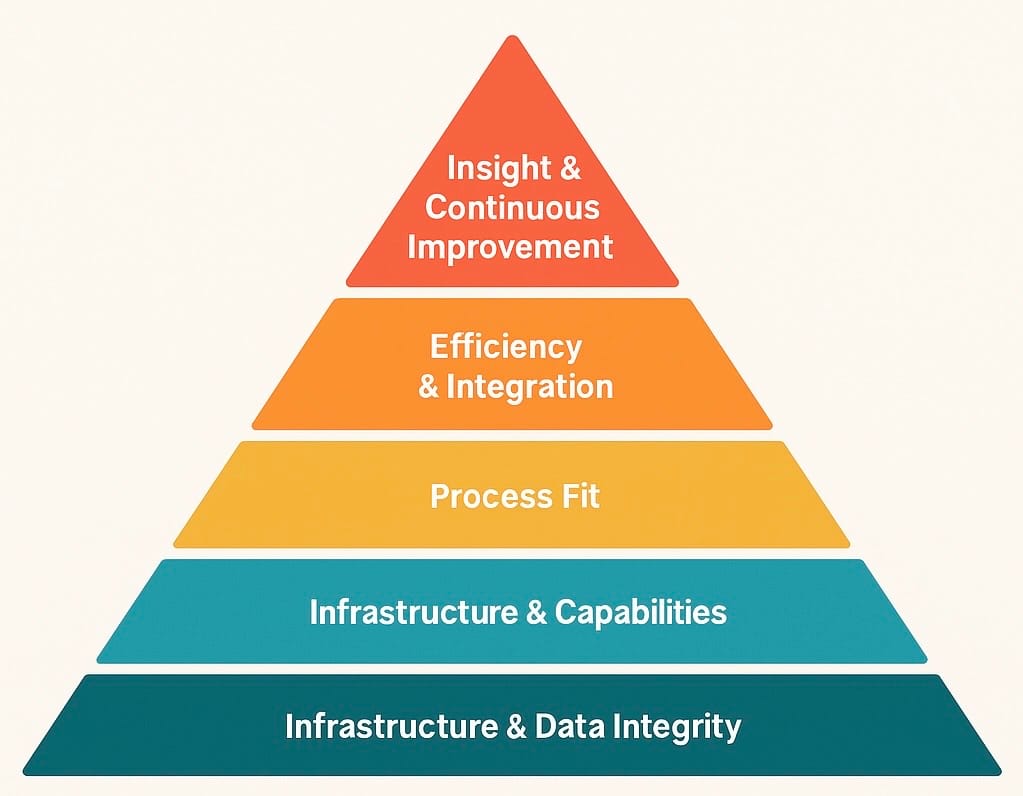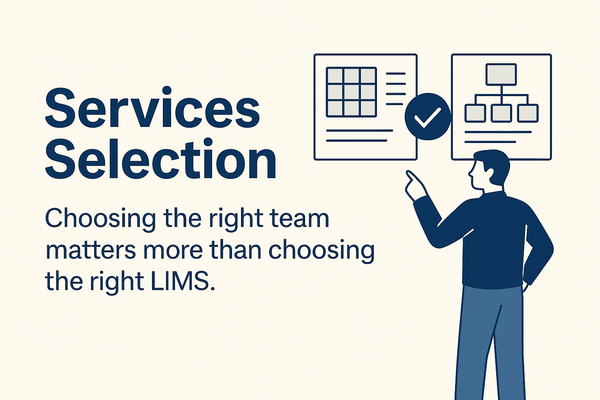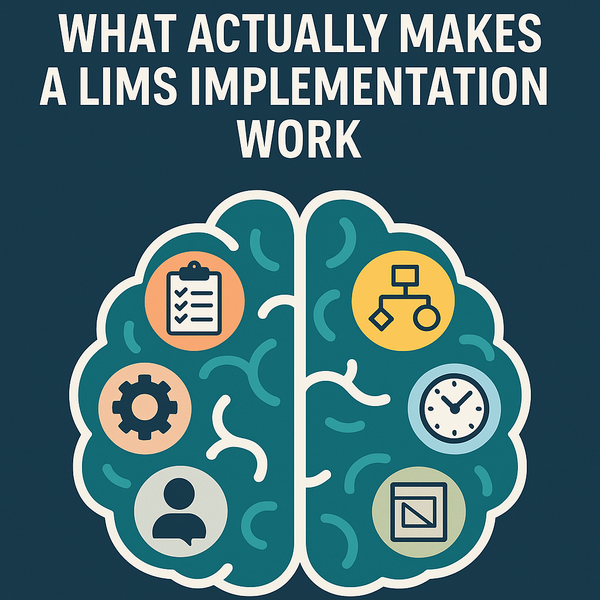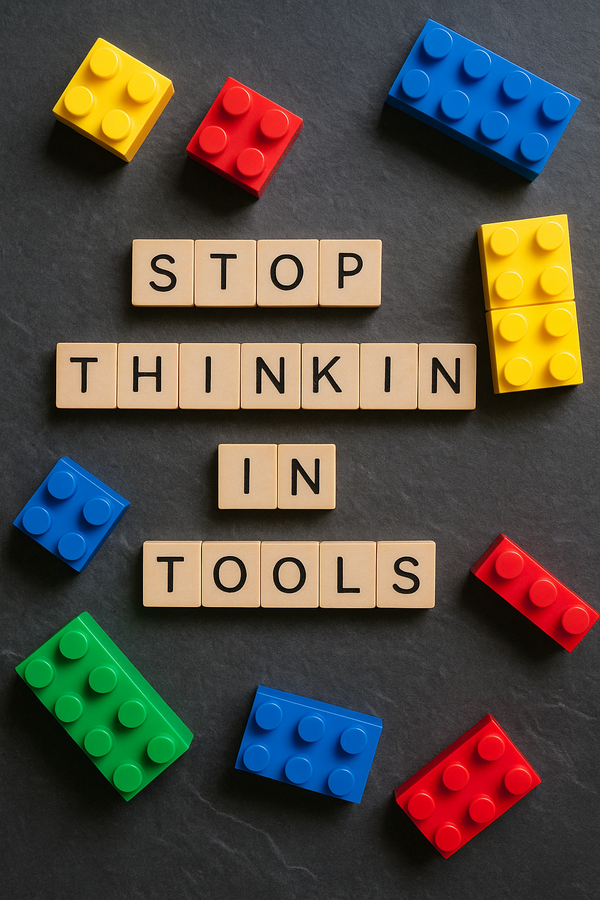The LIMS Hierarchy of Needs

Definition: The LIMS Hierarchy of Needs is a framework for implementing and improving a Laboratory Information Management System (LIMS), starting with foundational infrastructure and ending with advanced insights and continuous improvement.
Much like Maslow’s hierarchy of needs, each layer builds on the one below it. Skipping ahead without a solid base usually leads to failure.
1. Infrastructure & Data Integrity (Survival layer)
Without this foundation, a LIMS cannot function reliably.
Key elements:
- Stable hosting environment (on-prem, cloud, or hybrid)
- Secure access control and authentication
- Regular backups with tested restore procedures
- Baseline regulatory compliance (21 CFR Part 11, GxP where applicable)
- Acceptable performance and uptime
Example: A regulated pharmaceutical lab ensures its LIMS has redundant cloud hosting and verified disaster recovery before onboarding any users.
2. Core LIMS Capabilities (Operational safety)
These are the “minimum viable LIMS” functions that enable daily operations.
Key elements:
- Unique sample/test IDs and chain of custody tracking
- Result capture (manual entry or instrument integration)
- Status tracking for samples, tests, and workflows
- Basic reporting and audit trails
- Role-based permissions
Example: A food testing lab uses its LIMS to log incoming samples, track their location, and record pH measurements directly from the instrument.
3. Process Fit (Belonging and usability)
A LIMS should reflect your lab’s real workflows and SOPs.
Key elements:
- Configured workflows that align with SOPs
- Lab-specific data fields and structures
- Controlled vocabularies and master data alignment
- Role-based dashboards and worklists
- Elimination of “shadow systems” such as off-LIMS spreadsheets
Example: A clinical lab configures dashboards so pathologists see only pending case reviews, while technicians see only in-progress tests.
4. Efficiency & Integration (Optimization layer)
This is where the LIMS starts actively saving time and reducing errors.
Key elements:
- Instrument interfaces for automated data ingestion
- Automated calculations, QC checks, and flagging
- Bulk actions and batch processing
- Alerts, notifications, and escalations
- Integrations with ELN, ERP, MES, or inventory systems
Example: A manufacturing QC lab integrates its LIMS with the ERP so that material release status automatically updates when tests pass.
Note: just because this is a higher level in the hierarch doesn’t mean you can’t begin laying some ground work and testing assumptions earlier in your implementation.
5. Insight & Continuous Improvement (Strategic layer)
At the top, the LIMS becomes a decision-making tool and a driver for long-term improvement.
Key elements:
- Trend analysis and advanced reporting
- Business intelligence dashboards
- Predictive analytics or AI-assisted recommendations
- Process KPIs tracked and reviewed
- Continuous feedback loops to refine configuration
Example: An environmental testing lab uses trend reports from its LIMS to identify seasonal patterns in contamination levels.
Why this matters
Many failed LIMS implementations happen because teams try to jump straight to automation or analytics before securing the basics.
The result? Impressive-looking dashboards that are unreliable, fed by incomplete data, or disconnected from how the lab actually works.
Climbing the LIMS Hierarchy of Needs ensures your system evolves from a basic record-keeping tool into a strategic driver of lab performance and improvement.





